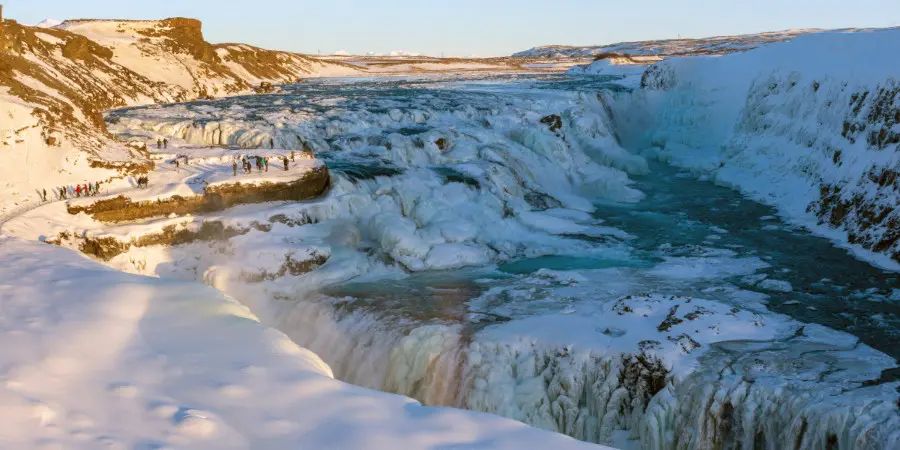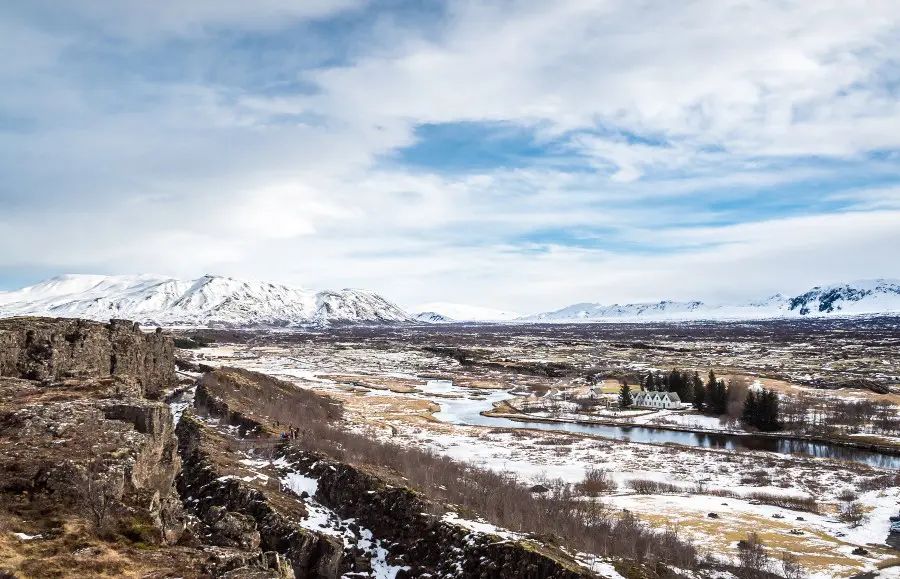


Get to know Iceland
As has often been said, the Icelandic weather is very fickle. We can’t guarantee you´ll see much snow and it has happened that ski companies have had to manufacture snow to be able to open their slopes. However, some things are guaranteed, like frozen waterfalls and lakes, short days, and cold. And oh boy, is it beautiful. But if you are looking for the most beautiful places in Iceland during the winter – you are in the right place.
The darkness does not have to be a bad thing, it gives everything an eerie blue hue, and the stillness that comes with the snow is fantastic. Check out our list below of the three most beautiful places to see during the Icelandic winter.
Gullfoss

The waterfall is one of the most famous ones in Iceland. It is one of the most popular spots to visit in the country, but do not let that stop you. The waterfall is always spectacular, but during the winter months, it is breath-taking. The constant spray of water from the fall creates beautiful ice formations around it.
However, because of the constant spray, it will also make the path down towards the fall extraordinarily slippery and dangerous. The trail often closes during the winter months but there is a viewing deck near the tourist information, and we recommend you use that instead. You will not be as close to the waterfall, but you get an excellent overview.
Dimmuborgir in North-Iceland has formed some 2300 years ago when the Þrengslaborgir and Lúdentsborgir craters erupted. The lava formed a massive lava tube and flowed over the area which later collapsed and left behind the lava formations. A lava tube is a natural channel that is formed by flowing lava that flows beneath a hardened surface. Raufarhólshellir lava cave is an excellent example of a lava tube that has not collapsed, as well as Iceland‘s biggest cave, Víðgelmir.
Dimmuborgir, meaning Dark Citadel, got its name from the lava formations which is characterized by large chamber-like structures which many are large enough to fit humans. The most famous one is called The Church.
The nearby Mývatn lake is equally beautiful, but it was formed at a similar time as Dimmuborgir. It is surrounded by lava pillars and pseudocraters. The name of the lake means Midge-Lake, and in the summer, it is almost impossible to visit the area for the flies, but in the wintertime, you get to enjoy the area without the flies. It is perfect for hikes, or you can visit the nearby Nature Baths or the volcanic Krafla area.
Þingvellir National Park

The beautiful Þingvellir in South-West Iceland is gorgeous all year round, but during winter it is gorgeous. Seeing the frozen Öxarárfoss waterfall and Öxará river is spectacular. When you are in the park, you are in fact standing between the Eurasian and North-American tectonic plates, but Iceland is the only country in the world where you can do that. The plates are slowly but surely pulling the country apart or about 2 centimeters a year.
Þingvallakirkja church was built in 1859, but there has been a church there since the 11th century and is considered the oldest church area in Iceland but Þingvellir was the place Icelanders agreed to become Christian in the year 1000.
Silfra spring is a favorite spot to dive, and even though the temperature is below zero, the spring does not freeze. It is fed with water from Langjökull glacier some 40 kilometers away. It takes decades for the water to reach Þingvellir and by then it is very clear and mineral-rich. It’s a fantastic place to snorkel or go diving.
The water is not warm even though it does not freeze; it stays a constant 4°C, so it is crucial always to wear a dry suit or drysuit. It is not every day you can dive between continents in such clear water.

CampEasy Opening hours 09:00-16:00
Learn more about Self-Service
A minimum of 20 hours notice is required to use the booking engine. Click here to contact us directly for a booking less than 20 hours from now.
Change Date